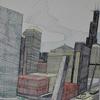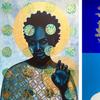'Ida O’Keeffe: Escaping Georgia’s Shadow' Exhibition Travels East to the Clark in Summer
- WILLIAMSTOWN, Massachusetts
- /
- January 16, 2019
Ida O’Keeffe: Escaping Georgia’s Shadow brings together thirty-five paintings, prints, and photographs exploring the artist’s mastery of color and composition as well as her complex relationship with her well-known sister Georgia O’Keeffe (American, 1887–1986) and the effect it had on Ida Ten Eyck O’Keeffe’s (American, 1889–1961) life and professional aspirations. The groundbreaking exhibition will be on view at the Clark Art Institute July 4–October 6, 2019.
Ida O’Keeffe: Escaping Georgia’s Shadow was organized by the Dallas Museum of Art and curated by Sue Canterbury, The Pauline Gill Sullivan Associate Curator of American Art. The exhibition debuted in Dallas in November 2018 and is the first ever solo museum exhibition of works by Ida Ten Eyck O’Keeffe and the most comprehensive survey of the artist’s work to date. Robert Wiesenberger, Associate Curator of Contemporary Projects at the Clark, is the curator of the Institute’s presentation.
“It’s a particular pleasure to bring this exhibition to the Clark,” said Olivier Meslay, Hardymon Director of the Clark. “During the years I worked at the Dallas Museum of Art, Sue Canterbury was doing extensive research on this exhibition, and I knew it would be a very important show. Her scholarship on this project is exceptional, as are the works included in the exhibition. We are proud to partner with Dallas on this project and to introduce Ida O’Keeffe to our visitors this summer.”
Ida O’Keeffe was a professionally trained artist who graduated with an MFA from Columbia University in 1932. Despite a once-close relationship between the sisters, Ida O’Keeffe’s small triumphs as an artist became a source of competitive tension between the two—causing Georgia O’Keeffe to eventually withhold support of Ida’s professional ambitions. Unlike Georgia O’Keeffe, who had the benefit of early backing and promotional expertise of her husband, Alfred Stieglitz, Ida O’Keeffe struggled to keep one foot in the art world of New York while teaching on short-term contracts at various colleges along the Eastern seaboard, the South, and the Midwest during the Great Depression and working as a nurse in several cities.
“The show is full of surprises—from the initial one of there being another outstanding O’Keeffe, to the artist’s ability to balance this career with her others as a teacher and a nurse often on the move, to her stylistic range and evolution,” said Wiesenberger, the Clark’s curator of the exhibition. “It’s also full of questions. The exhibition closes with Creation (c. 1936), O’Keeffe’s stunning foray into total abstraction, prompting us to ask what might have been, had the artist’s career unfolded differently.”
The exhibition opens with eight photographs by Alfred Stieglitz (American, 1864–1946). The photographs, taken at Stieglitz’s summer home in Lake George, New York during the fall of 1924, show the enjoyment Ida and Georgia O’Keeffe took in each other’s company prior to their estrangement in the early 1930s. One image shows the sisters laughing and smiling, mugging for the camera. A more solemn portrait suggests their different personalities and perhaps foreshadows their eventual conflict. Other photographs point to Stieglitz’s fascination with Ida O’Keeffe, as indicated by suggestive inscriptions that reveal he would have welcomed a relationship of a more intimate nature.
Ida O’Keeffe: Escaping Georgia’s Shadow includes paintings that appeared in O’Keeffe’s first gallery shows in New York and Wisconsin in the late 1920s and early 1930s. Still Life (Still Life with Fruit) (1926) was included in the 1927 Opportunity Gallery exhibition curated by Georgia O’Keeffe. Ida O’Keeffe, not wanting to be perceived as riding her sister’s coattails, dropped her last name and exhibited the work as Ida Ten Eyck. Of the paintings on view, The New York Times noted, “among the best pictures are those by Ida Ten Eyck.”
“When one sees the caliber of many of Ida O’Keeffe’s works, it seems incredible that she has remained relatively unknown—especially given the fame of her sister, Georgia,” said Sue Canterbury, organizing curator of the exhibition. “Ida is fascinating not only because of the dynamics within her famous artistic family, but also for the distinct and experimental approach of her work, which reflects a range of contemporary influences, such as American Modernism, Regionalism, and abstraction.”
In 1933 Ida O’Keeffe had her first major solo show at the Delphic Studios, a contemporary gallery in New York. Here, she presented a series of paintings depicting the Highland Light, a lighthouse in North Truro on Cape Cod, which she created in 1931–32 while pursuing a master’s degree at Columbia. Ida O’Keeffe: Escaping Georgia’s Shadow includes six of the seven known lighthouse paintings from the series. While the location of the first painting in the series is currently unknown, it is a realistic representation of the iconic lighthouse, with the following six canvases increasingly experimental and abstracted. The use of “dynamic symmetry,” a rigorously mathematical approach to composition, was key to the development of the series.
The Delphic Studios show, preceded by one at the same gallery by Ida and Georgia’s sister Catherine O’Keeffe Klenert (American, 1895–1987), marked the beginning of the estrangement between the sisters. Critics noticed the proliferation of O’Keeffe artists and declared them a “family of artists.” Georgia O’Keeffe responded with anger and demanded that her two younger sisters abandon art and cease to exhibit. Although Klenert obliged, Ida O’Keeffe did not, and the once affectionate relationship between Georgia and Ida O’Keeffe was permanently altered.
By the late 1930s, Ida O’Keeffe’s work adopted a more regionalist look that, although more subdued and lyrical, is underpinned by the same structural principles of her earlier art. Star Gazing in Texas (1938), a painting created during her year of teaching in San Antonio, emphasizes how O’Keeffe’s nomadic existence provided her with exposure to new environments and subject matter, serving as inspiration for many works. She achieved a melding of subject and frame in the painting, which depicts a young woman bathed in moonlight contemplating the stars in the heavens—appearing not in the painting, but on the upper molding of the frame.
Throughout her career, Ida O’Keeffe created works on paper with a special affinity for the spontaneity and freshness of monotypes, which she referred to as being “in the half-shadow between painting and print-making.” The exhibition includes a selection of several monotypes, etchings, and drypoints such as The Fish (1935) and The Oregon Coast (1937). An untitled monotype from 1940 likely depicts the spires of Trinity Church in New York, where Ida O’Keeffe spent the year working as a private nurse.
The exhibition is accompanied by a fully illustrated catalogue, which is the first publication devoted to exploring the life and work of Ida O’Keefe. Generous support for the exhibition and catalogue is provided by The Kaleta A. Doolin Foundation. The Kaleta A. Doolin Foundation is dedicated to being a resource and strategic partner for social change, focusing on advancing equity for women and girls, and encouraging cultural diversity and representation in the arts. Presentation of Ida O’Keeffe: Escaping Georgia’s Shadow at the Clark is supported by Richard and Carol Seltzer.
















